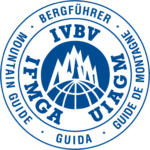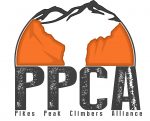Leave No Trace Principles
We Leave No Trace
With the rise in popularity of backpacking and climbing, the mountains around the world are being visited by ever increasing numbers of people. We are drawn to the mountains for their beauty, purity, remoteness, ruggedness, and the unique challenges they present. The mountains are our home, and it can sometimes be challenging to Leave No Trace and maintain the natural beauty of the wilderness areas we explore. At PPAS we take Leave No Trace ethics and practices very seriously. The mountains are our home and we are unwilling to sacrifice their preservation for human objectives.
We believe that given the proper information most people will do all they can to help protect and maintain the environment. As guides, we spend time teaching the environmentally appropriate Leave No Trace principles and practices. There is nothing more beautiful than working hard to get high into the mountains, come upon a pristine campsite, witness incredible views and have the feeling that no one has been there before. And there is nothing more disheartening than working hard to climb a mountain, reaching a site and encountering trash, food waste and/or toilet paper. Please read the seven LNT principles below and feel free to call the office if you have any questions about what you can do to plan ahead and prepare.
Thanks for taking the time to read this information. We look forward to climbing with you.
1) PLAN AHEAD AND PREPARE
•Define your trip itinerary and objectives by researching relevant information including: route conditions, avalanche danger, weather forecasts, and local permits and regulations.
•Prepare for extreme weather, hazards, emergencies and self-rescue.
•Determine the strategy for your team’s food and fuel consumption, and for waste disposal.
•Choose an appropriate route that suits your team¹s size, ability and experience. Leave a copy of your itinerary with family or friends.
•Repackage your food into reusable containers or bags.
•Carry and know how to use a map, compass, altimeter, route markers and, possibly, a global positioning system unit.
2) TRAVEL AND CAMP ON SAFE, DURABLE SURFACES
On Trail
•Focus your activities on durable surfaces, including: established trails, deep snow, rock or inorganic soil. Avoid vegetation, thin snow cover and organic soils.
•Establish an appropriate route up the mountain, taking into consideration the team’s safety and Leave No Trace principles. Plan your route with the idea that others will follow.
•Whenever possible and safe, remove route markers during your descent.
At Camp
•In high-use areas, use established campsites. In pristine areas, minimize your impacts by breaking down constructed snow walls and wind breaks.
•Use man-made tent anchors (ice screws, axes, poles, etc.) whenever possible. Replace any rocks or other natural anchors where found.
3) DISPOSE OF WASTE PROPERLY
•Pack It In, Pack It Out. Pack out everything you carry with you including garbage, trash, and extra fuel. Trash left at altitude or in crevasses does not biodegrade. Whenever possible, remove others’ discarded waste from the mountain.
•In high use areas, use established restroom facilities. Otherwise, pack out solid human waste via “blue bags” or other techniques. If packing out all solid human waste is not possible due to trip duration, refer to local protocols on how to dispose of human waste.
•Designate a “clean snow” area (up slope from camp) to serve as your water source. Focus your activities and waste disposal sites away from this area.
•Consolidate liquid human waste in a designated urinal down slope from camp and away from the designated water (snow) source. Consider using a “pee bottle” in camp to facilitate disposal. When traveling, step off the trail to urinate, so others won’t have to hike through yellow snow.
•Dispose of gray water (dishwater) in a designated sump hole down slope from camp. Strain the dishwater and pack out all leftover solids.
4) LEAVE WHAT YOU FIND
•Leave all rocks, plants, animals and historical or cultural artifacts as you find them.
5) MINIMIZE CAMPFIRE IMPACTS
•Always carry a lightweight camp stove. Adequate wood is generally unavailable on mountaineering expeditions, making fires infeasible and inappropriate.
6) RESPECT WILDLIFE
•Observe wildlife from a distance. Do not follow or approach them.
•Never feed wildlife or leave food behind to be eaten.
•Protect wildlife and your food by storing rations and trash securely.
•Anticipate changing weather conditions by marking your cache.
7) BE CONSIDERATE OF OTHER VISITORS
•Communicate and cooperate with other teams.
•Yield to uphill climbers by stepping off the route onto a durable surface.
•Avoid unnecessarily clustering campsites whenever possible.
•Let nature’s sounds prevail. Keep loud voices and noises to a minimum.
•Take rest breaks off the route, away from other campsites, and on a durable surfaces.












